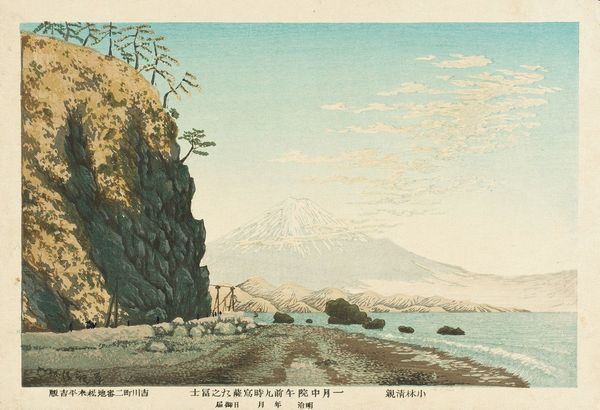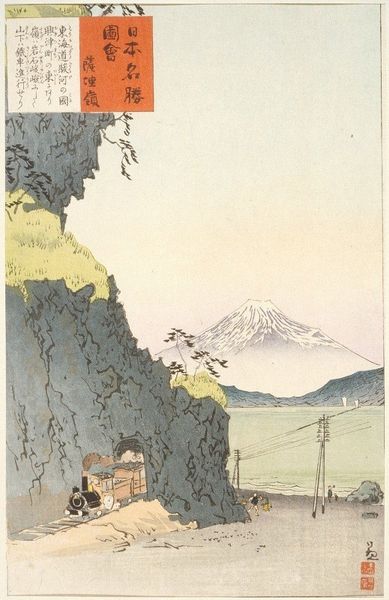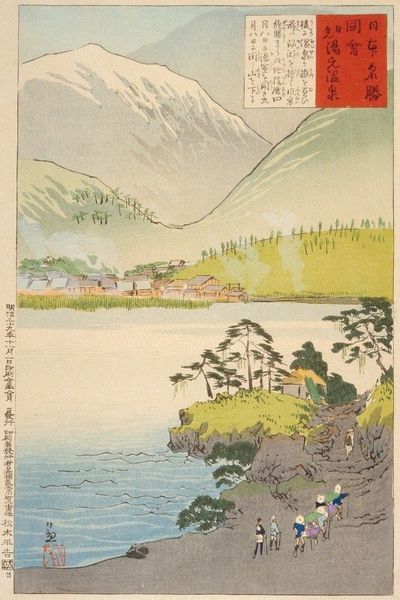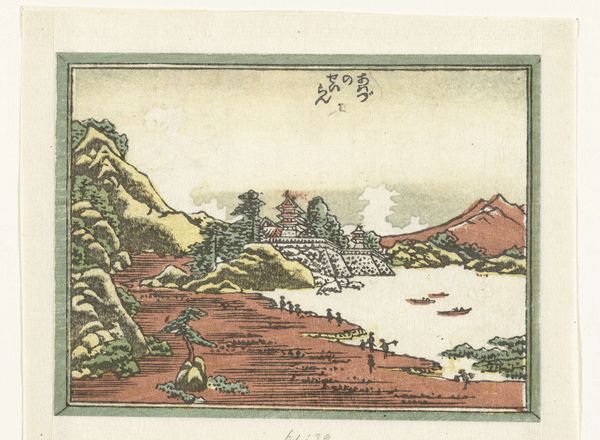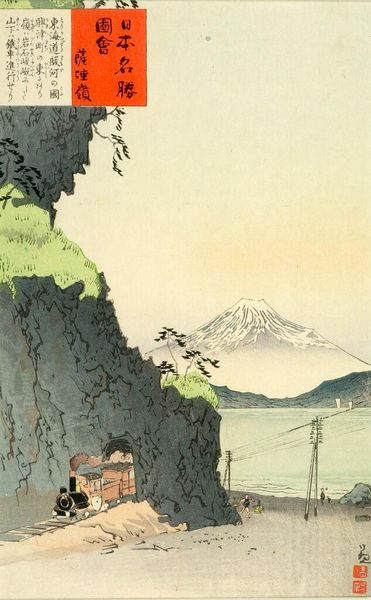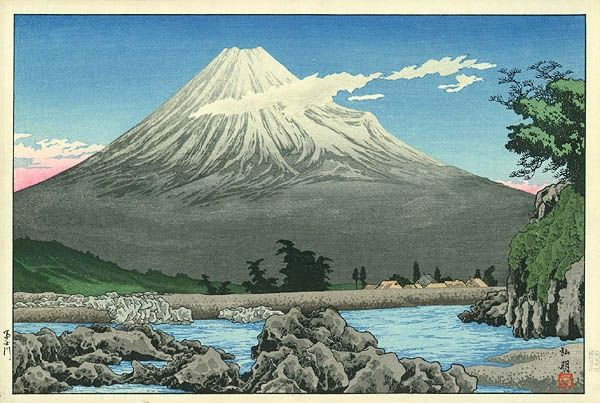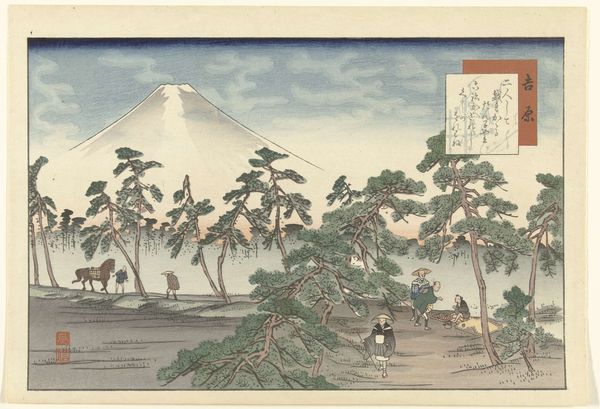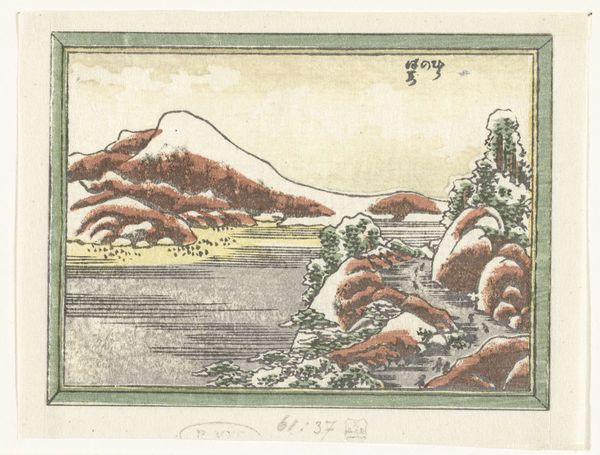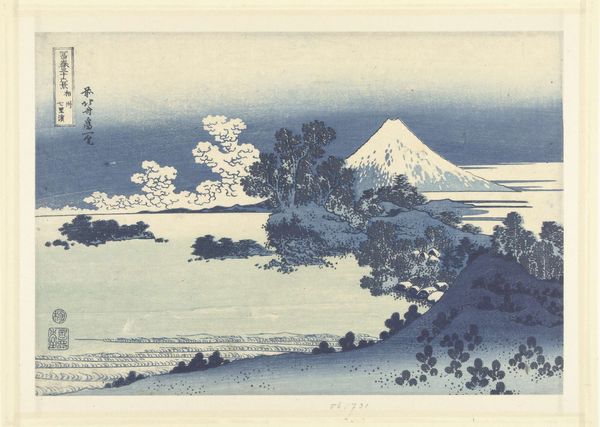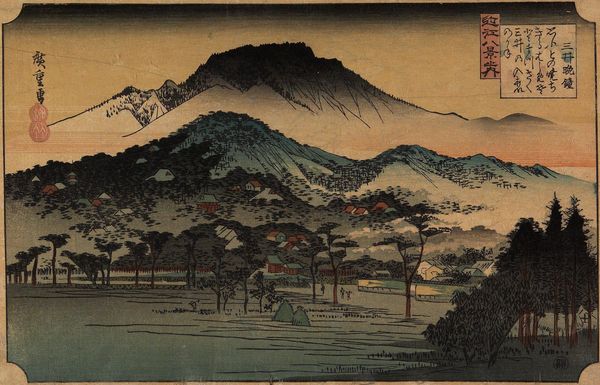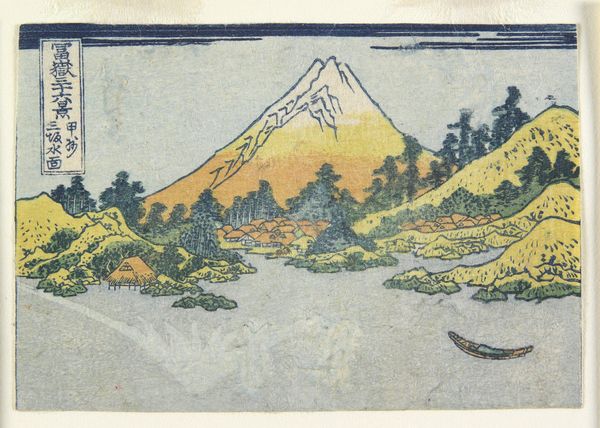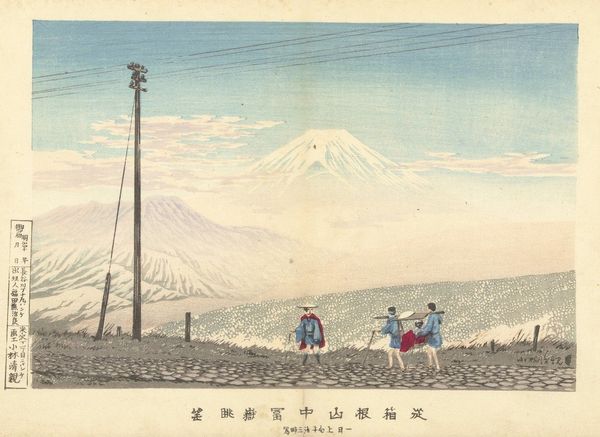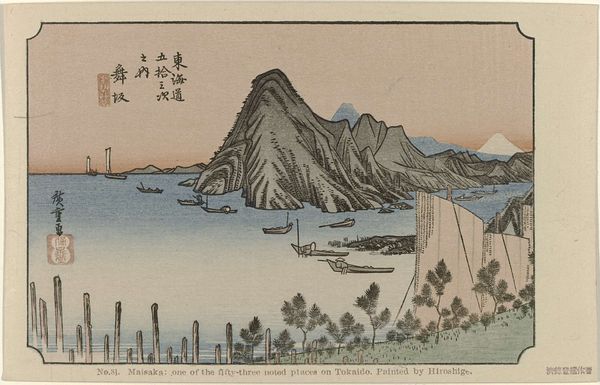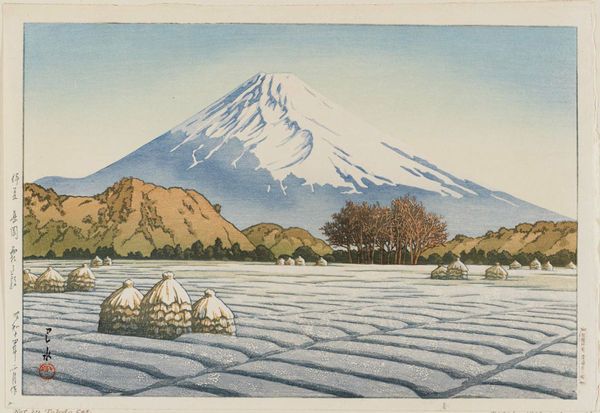
Copyright: Public Domain: Artvee
Curator: Look at this scene—'Mount Fuji From Satta, Sketched At 9 A.M. In Mid-January, 1881' by Kobayashi Kiyochika. It's a woodblock print, part of the ukiyo-e tradition, and executed around 1881. What strikes you about it? Editor: Instantly, the quietness. It’s this incredibly serene view—pale blues and browns—but also, there's something monumental about how Fuji dominates the horizon. It feels…almost mythical in its stillness. Curator: That serenity is so much a part of Kiyochika's brilliance, he often merged photography and Japanese woodblock techniques to create almost meditative imagery of Japan. The integration of "Western" pictorial systems into traditionally East-Asian art practices underscores some fascinating conversations regarding cultural boundaries and the forces that perpetuate or erase such divides, no? Editor: Precisely. And in its early reception, it invited cross-cultural dialogues regarding Japonisme and impressionistic interpretations. The influence is clearly there in the way light filters through those wispy clouds! But going back to Kiyochika, it’s striking how modern elements like telegraph poles are included in the print – these contemporary markers of the industrial Meiji era coexisting with the timelessness of Fuji. It speaks volumes about how a society embraces change without completely letting go of its past. Curator: Absolutely! It suggests progress isn’t about eradicating what was, but about acknowledging and integrating. These kinds of subtle elements act as anchors within a larger narrative, anchoring modernity with time-tested and enduring natural features like Mt. Fuji. To me, there’s also an unmistakable melancholy in these prints. Is this your understanding of Kiyochika's print, too? Editor: Maybe "melancholy" is too heavy-handed, I'd lean toward "nostalgia." The scene does capture a specific time – a morning in January— but the stillness transcends time. The artist has gifted to the world a singular moment in time—for our reflection. It shows change—both cultural and artistic change—that we all, one way or another, must come to accept as part of life. Curator: “Nostalgia”… a longing gaze. Well said. Thank you for bringing out a different kind of sentiment for Kiyochika's masterful vista.
Comments
No comments
Be the first to comment and join the conversation on the ultimate creative platform.
